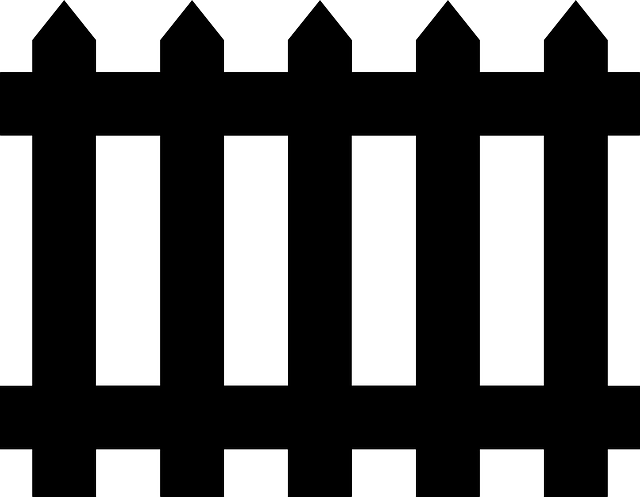In coastal regions, where harsh weather conditions and salt air pose unique challenges, selecting the right fencing material is paramount. This article explores the benefits of durable wooden fencing as a resilient and aesthetically pleasing option for your coastline property. We’ll delve into understanding the specific challenges of coastal fencing, uncovering the advantages of wood, guiding you through choosing the ideal species, offering installation tips tailored to these environments, and sharing maintenance secrets to ensure longevity.
- Understanding Coastal Fencing Challenges
- Advantages of Durable Wooden Fencing
- Choosing the Right Wood Species
- Installation Considerations for Coastlines
- Maintenance and Longevity Secrets
- Enhancing Coastal Aesthetics with Wooden Fences
Understanding Coastal Fencing Challenges
Coastal areas present unique challenges when it comes to fencing due to their harsh environments. Saltwater, strong winds, and constant exposure to varying weather conditions can significantly impact traditional fencing materials. The primary concern is ensuring that the fence not only lasts but also withstands extreme conditions, making durable wooden fencing a preferred choice for many property owners in these regions.
One of the key challenges is finding wood that can resist rot and decay caused by saltwater. Regular timber may weaken over time when constantly submerged or exposed to high moisture levels. Therefore, selecting specific tree species known for their natural resistance to corrosion and humidity becomes crucial. Additionally, proper treatment methods, such as pressure-treating the wood, further enhance its longevity, making it suitable for coastal settings.
Advantages of Durable Wooden Fencing
Durable wooden fencing offers numerous advantages for coastal areas, where traditional materials often face increased wear and tear from salt air, moisture, and extreme weather conditions. Firstly, wood selected for its durability, such as treated cedar or redwood, can withstand these elements better than other types, ensuring longer life spans and reduced replacement costs over time. These species are naturally resistant to rot and insect damage, common issues in humid coastal environments.
Additionally, wooden fencing provides an aesthetically pleasing alternative to concrete or metal, adding curb appeal to any property. Its versatility allows for custom designs and styles that can complement coastal homes and landscapes, blending seamlessly with the natural surroundings. Durable wood fencing also provides privacy and security while allowing light and air to pass through, creating a more open and connected outdoor space.
Choosing the Right Wood Species
When selecting wood for coastal fencing, understanding the local climate and environment is key. Saltwater exposure, high humidity, and regular wind patterns can significantly impact wood durability. Opting for rot-resistant hardwoods like cedar or redwood is a popular choice as these species naturally resist decay and moisture damage.
Each wood type has unique characteristics; for instance, cedar offers excellent natural resistance to insects and fungi while redwood possesses a dense grain that repels water. Considering factors such as local availability, cost, and aesthetic preferences will further refine your selection, ensuring the chosen wood species aligns with the demanding coastal environment.
Installation Considerations for Coastlines
When installing durable wooden fencing in coastal areas, several unique considerations come into play due to the region’s harsh marine environment. First, it’s crucial to choose wood species that are naturally resistant to rot and decay, like treated cedar or redwood. These options have proven longevity against salt air and moisture. The location of the fence is also key; avoid planting it directly in the sand as water can easily damage the roots and compromise the structure. Instead, opt for well-draining soil or elevated posts set on concrete foundations to ensure stability.
Another critical aspect is regular cleaning and maintenance. Salt buildup on the fencing can accelerate wood deterioration, so periodic power washing to remove salt residue and apply fresh protective coatings are essential. Proper installation techniques, including using galvanised hardware and securing the fence to solid anchor points, further enhance its resistance against coastal elements. Regular inspections should also be conducted to identify and address any signs of damage early on, ensuring the longevity of the wooden fencing in these challenging environments.
Maintenance and Longevity Secrets
Maintaining durable wooden fencing in coastal areas requires a thoughtful approach to ensure longevity. Regular cleaning is essential, using mild soap and water to remove salt spray residue and other debris. A light sanding can help to smooth any rough spots and prepare the surface for re-staining or sealing. Choosing the right finish is crucial; opt for water-based stains or sealers designed for exterior use, which are less likely to attract moisture that can lead to rot.
Additionally, ensuring proper drainage around the fence is vital. Install slope grates or create a slightly angled surface to prevent water from pooling at the base. These simple maintenance practices, combined with high-quality wood species and expert installation, can extend the life of your wooden fencing significantly, ensuring it stands strong against coastal elements for years to come.
Enhancing Coastal Aesthetics with Wooden Fences
Coastal areas often boast stunning natural beauty, but they also face unique challenges from harsh weather conditions and salt air, which can impact outdoor structures. Wooden fencing, particularly durable varieties like treated or exotic hardwoods, offers a beautiful and functional solution for these environments. Not only do they provide much-needed privacy and security, but well-crafted wooden fences can enhance the overall aesthetic of a coastal property.
The natural warmth and texture of wood complement the sea breeze and vibrant landscapes, creating a harmonious blend with the surrounding environment. From classic horizontal board fences to stylish vertical slat designs, these options offer versatility in style while also being resistant to rot and decay, ensuring they stand the test of time—and storms.
